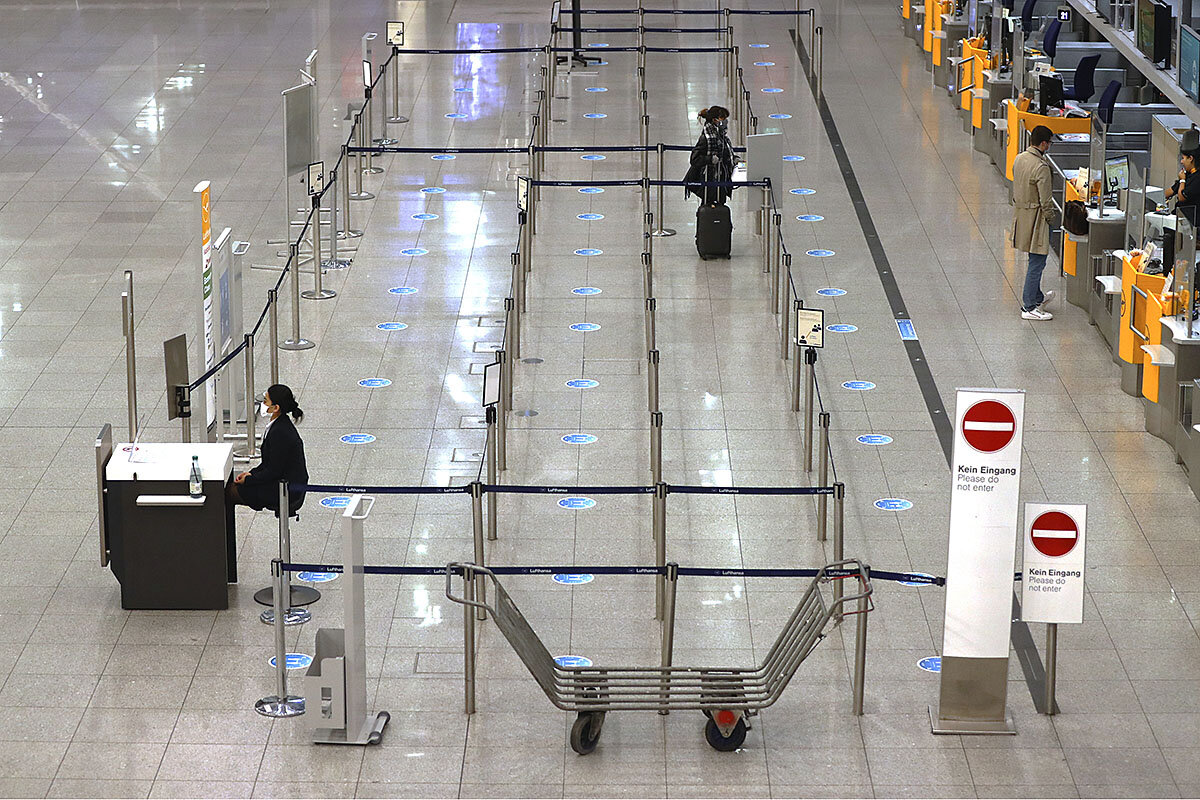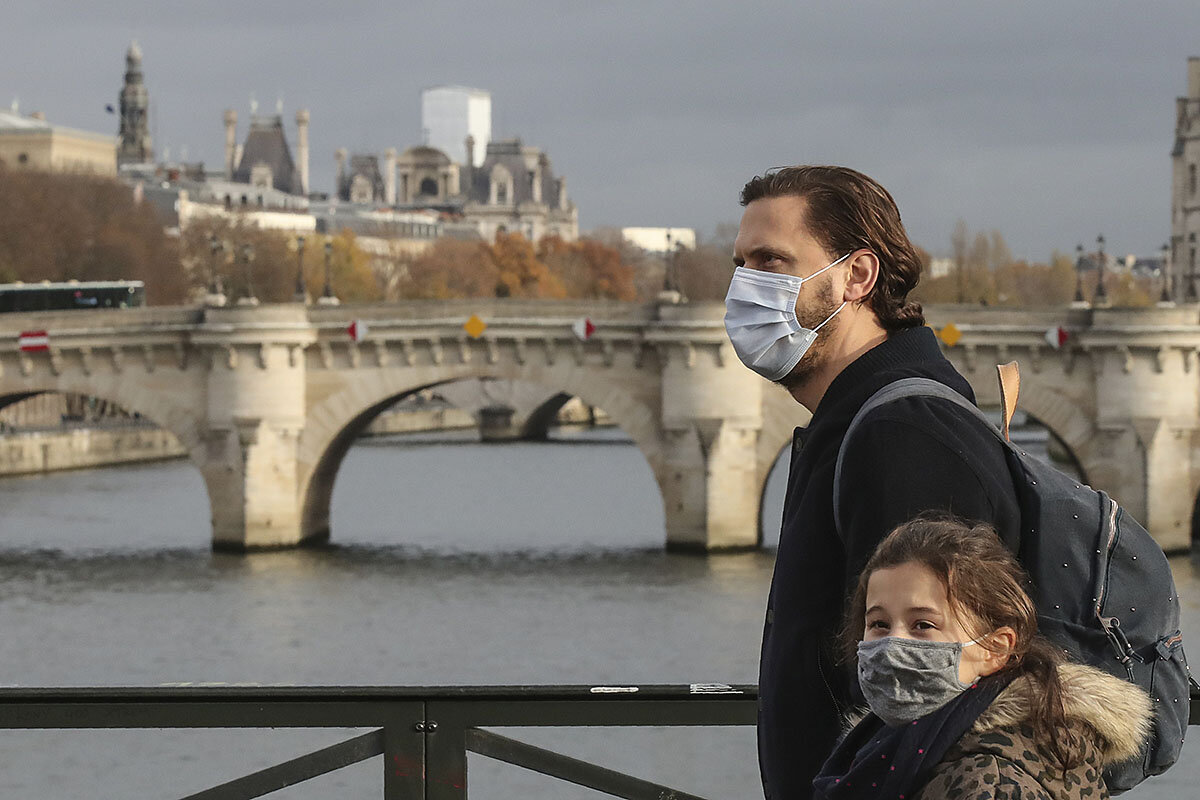In European COVID-19 seesaw, lessons in patience for America?
Loading...
| London
This is a story about seesaws. But not the kind you find in your neighborhood playground.
It’s about policy seesaws, now playing out in a pandemic-fraught Europe, as governments have swung from strict lockdowns to relaxed tolerance and now back again. And their example has implications an ocean away, as U.S. President-elect Joe Biden prepares to assume office in January.
With the pandemic at the top of his inbox, Europe’s frenzied response to a new surge in COVID-19 cases across the continent carries potentially key lessons about the scale of the challenge, the policy options for meeting it, and – perhaps most importantly – the costs of getting things wrong.
Why We Wrote This
European COVID-19 control policies have swung from lockdown to liberty and back again. In new government efforts to persuade citizens to accept a more nuanced approach, are there lessons for America?
One lesson may seem obvious, but it still matters hugely. The pandemic hasn’t gone away and it’s not likely to do so soon. Despite encouraging news about vaccine trials, one of the scientists behind the new Pfizer vaccine told Britain’s BBC he did not expect vaccines to allow a return to “normal” life until next winter – a full year from now.
Or, as the head of the World Health Organization, Tedros Adhanom Ghebreyesus, put it this week, “We might be tired of COVID-19. But it’s not tired of us.”
That’s why the policy lessons from Europe bear watching, especially across the Atlantic. European governments lack Chinese-style autocratic command and control of their societies. They can’t call on the deeply ingrained sense of community, or the widely recalled experience of other recent epidemics, that have helped Asian states like South Korea or Taiwan cope so effectively.
Neither can Washington. So it’s worth understanding Europe’s COVID-19 seesaw.
While each European government has chosen its own level of lockdown, the new restrictions all have something in common: They were imposed suddenly after months of relative official insouciance.
Over the summer, Europeans lulled themselves into an assumption that after the COVID-19 onslaught in the spring, the worst of the pandemic was over, that with reasonable precautions economies could safely reopen, and that life could resume pretty much as before. Things, they thought, were under control.
Their governments knew this was unlikely to be true; their public health experts had warned them to expect a resurgence.
But European leaders faced a political problem: how to convince citizens who were reveling in a return to their familiar lives that COVID-19 was “not tired” of them. And, critically, how to persuade them to behave accordingly – to do without bars and cinemas and restaurants, for example, or to stop throwing and going to parties – not just for a few days or weeks, but until the pandemic was truly under control.
If they had succeeded in doing that, they could perhaps have relied on what their health experts were advising was the simplest and most effective way of combating the coronavirus: mask-wearing and physical distancing to keep cases low, along with widespread testing and tracking, allowing for more limited, targeted restrictions on everyday life.
But by the time the new COVID-19 wave began to hit Europe last month, it was too late. That explains the policy seesaw, the sudden move to much tighter restrictions, even lockdowns, much like those earlier this year.
The key question now – one that the incoming American president and his team will no doubt be asking, too – is about the future: how to avert yet another exercise in policy seesawing a few months from now.
In Europe, the answer still hangs in the balance.
With health systems under obvious pressure, most European citizens are complying with the new regulations, and seem newly aware, at least for now, of the importance of masks and physical distancing. But, especially because of the economic hardship caused by the reimposed restrictions, they also remain “tired of COVID-19.”
Some European leaders are selling the new crackdown in much the same way as they explained the one in the spring: Just do this and, before long, we’ll get things under control. In some countries, the carrot being held out is the prospect of something resembling a normal, family Christmas.
Others are voicing more caution, warning, for instance, that large-scale holiday gatherings won’t be possible.
But none has yet dared to proclaim what might be called an explicit anti-seesaw message – that however difficult it sounds, Christmas and much else in people’s lives may have to be abnormal this year, with fewer loved ones present, more masks, more distancing. Politically, that is still a hard prospect to raise. Even though the likely alternative is another seesaw – more lockdowns, more lives and businesses lost – sometime in the new year.
For President-elect Biden, facing the likelihood that the pandemic will still be raging in the U.S. when he takes office, the current picture across the Atlantic provides a stark reminder of the challenge he’ll be up against.
But if Europe does turn out to have learned the policy perils of the seesaw, if its citizens do accept the need for a more measured reopening after this round of lockdowns, the Biden administration will be able to point to a more encouraging example.
Yet the next president’s ultimate challenge may well be to tackle a very American phenomenon – the politicization of the pandemic, which colors attitudes about everything from masking and distancing to treatments and vaccines.
Putting Europe’s lessons to practical effect will be more than a matter of policy choices. Rather, it is likely to depend on how successful Mr. Biden is at achieving the dauntingly ambitious commitment at the heart of his presidential campaign: to begin to dampen America’s partisan rancor and to heal its divisions.








